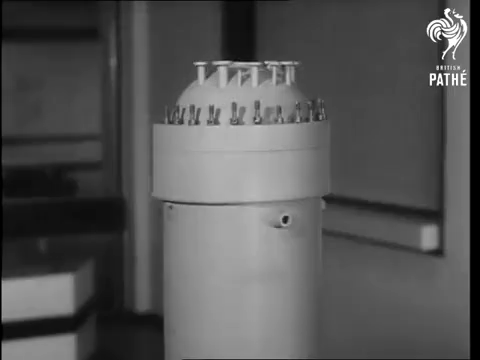‘It was becoming clear that nuclear energy would never be the same and that the industry needed a different approach.’

For the last few years, GE Hitachi have been quietly working away at a reactor design that might blow its competitors out the water — including natural gas.
Jon Ball, Executive Vice President at GE Hitachi Nuclear Energy, last year talked about the birth of GE’s BWRX-300 small modular reactor back in February 2017:
The team explained their idea. They had started by evaluating Generation IV technologies to drive a cost-competitive solution, but they learned that customers wanted a technology that was licensable and ready in the near-term, prior to 2030. Considering this input, the three innovators shifted to determine if they could adapt our existing large LWR design, the Economically Simplified Boiling Water Reactor (ESBWR), into a smaller reactor that could compete with gas generation. Although this sounds like an impossible task for nuclear, their invention enabled dramatic simplification. They figured out how to eliminate/mitigate the possibility of a large-break, loss of coolant accident (LOCA.) By doing this, we were able to eliminate unnecessary back up cooling systems and have reduced the structure’s volume, including concrete and other building materials, by more than 50% per MW compared to ESBWR.
“The key to cost reduction in creating an SMR is driving simplification compared to larger reactors. What the innovators created was an incredibly elegant and simple 300 MWe, 10th generation BWR known as the BWRX-300.”

Conventional nuclear power plants invariably feature large, specially-made steam turbines and generators for ‘their balance of plant’. GE Hitachi continued their innovative thinking and instead sought recommen-dations from their steam power systems division. The result was the selection of the off-the-shelf steam turbine and generator pictured here, with dozens and thousands of existing deployments, respectively. This was on the basis of the ideal, globally ubiquitous size of 300 MWe.

There’s a recently closed-down boiling water reactor in Switzerland called Mühleberg which was around the same sized output as the BWRX-300 design, and which enjoyed a rather good run.
In the Netherlands, the small Dodewaard BWR also operated quite well for three decades.

https://cdn.embedly.com/widgets/media.html?src=https%3A%2F%2Fplayer.vimeo.com%2Fvideo%2F524782130%3Fapp_id%3D122963&dntp=1&display_name=Vimeo&url=https%3A%2F%2Fvimeo.com%2F524782130&image=https%3A%2F%2Fi.vimeocdn.com%2Fvideo%2F1086750586_1280.jpg&key=a19fcc184b9711e1b4764040d3dc5c07&type=text%2Fhtml&schema=vimeo
To summarise: BWRX-300 is a mini version of a currently licensed reactor design, requiring a fraction of the concrete and steel, 26 months to build, on a 0.026 square km site, using proven reactor components and off-the-shelf balance of plant, based on real world operating experience for similar size and coolant circulation.
Want more? Not only are loss of coolant accidents eliminated by design, the smaller nuclear core leads to significantly limited source term, the inventory of radioactives which need to be kept in the reactor. A small source term justifies a small site boundary, which should be no more than a 1 km radius. Passive coolant circulation takes care of any risk of overheating.
“Billion dollars, all in, to construct a plant.”
GE Hitachi are already working with Dominion in the US and OPG in Canada, targeting operation in 2028 and a cost of $1 billion USD (all in, not overnight capital cost).
If GE Hitachi makes good on their claims, the 2020s are going to be a good decade for climate-friendly energy.
Oscar Archer holds a PhD in chemistry and has been analysing energy issues for over 15 years, focusing on nuclear technology for six, with a background in manufacturing and QA. He helps out at Adelaide-based Bright New World as Senior Advisor (we want your support!) and writes for The Fourth Generation. Find him @OskaArcher on Twitter.


